Beethoven Concerto opus 37 par Artur Rubinstein (piano) et Symphony of the Air, sous la direction de josef krips
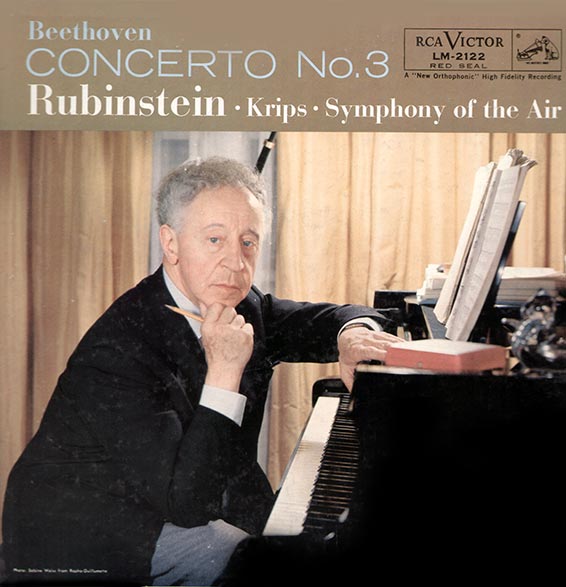
Beethoven, Concerto no 3, en do mineur, opus 37, Artur Rubinstein (piano), symphony of the air, sous la direction de josef krips. LP 33t., RCA Victor LM-2122, 1958.
Face A :
Face B :
In a historical perspective, the five piano concertos of Beethoven have a comforting kind of balance, a pyramiding of interest through a logical sequence. They also divide neatly into a coupling of two and two on either side of the pivotal No. 3 — the first two preparatory, the last two prophetic of virtually everything to come in the future of the piano concerto. For many who regard C minor as the most characteristic Beethoven key (in consequence of such works as the fifth symphony, several sonatas, and sundry other works), the third concerto is the work most characteristic of the defiant, brusque but manysided young Titan Beethoven was even before he reached thirty.
It was typical of a time in his life when he still regarded the accomplishments of Mozart as beyond his realizations -— as attested by an incident that occurred when Johann Baptiste Cramer, the foremost pianist of his time (a direct contemporary of Beethoven’s) was passing through Vienna. The two were visiting the Augarten (a famous outdoor concert place located on an island created by the Danube canal and the Danube river) where a work of Mozart was being performed. “Beethoven suddenly stood still and, directing his companion’s attention to the exceedingly simple, but equally beautiful motive which is first introduced toward the end of the piece, exclaimed: ‘Cramer, Cramer! we shall never be able to do anything like that!’ As the theme was repeated and wrought up to the climax, Beethoven, swaying his body to and fro, marked the time and in every possible manner manifested a delight rising to enthusiasm.’ [The description is from Thayer’s Beethoven]. The provocative further facts are that the work in question was Mozart’s C minor piano concerto (K. 491), and the year was 1799. Its direct relationship to Beethoven’s C minor (to which he alluded as “in hand” in a letter of 1800) can hardly be questioned.
Neither the opus number (37) nor the date of publication (1804) is a reliable guide to the time of composition, for it is the kind of work he frequently “held back” for self-performance, at a time and place of his own choosing. In the case of the C minor concerto, this time and place was the Theater-an-der-Wien on April 5, 1803, in a gargantuan program that also included the first two symphonies and the oratorio The Mount of Olives.
The new orchestral resources of Beethoven are manifest not in the addition of instruments to those utilized in the C major (two flutes rather than one is the single enlargement), but in the boldness and sureness of their use. When the horns and the trumpets are utilized to strengthen the mass of the sound, they are busy with thematic elements. Likewise, the woodwinds are color factors in a consistent scheme, rather than merely elements of contrast. The lengthy introduction, which projects both the strong basic C minor idea and its lyric counterpart in E-flat, is absorbing not merely of itself but as a portent of dramatic development.
The vigorous entrance of the piano (a la Mozart, in its surprise gambit of figures rushing upward to an announcement of the principal theme) is followed by surprise reaches for unexpected but always gratifying elaborations of thought. It is somewhat more brilliantly, spaciously conceived in keyboard treatment than the C major, but the impelling strength comes from dextrous, “improvisatory” extensions of periods into musical sections of bigger dimensions than he had hitherto projected. Listening to the orchestral background, one can hear, repeatedly, fragments of ideas worked over in a manner suggestive of such later works as the fourth symphony. And, as Mozart did for the first time in his C minor concerto, noted above, Beethoven adds the piano to the orchestra after the cadenza in a magical rounding out of effect which every composer after him has endorsed as standard practice. (In the Rubinstein adaptation of the Busoni cadenza, the underlying timpani strokes are anticipated in the bridge passage of trills). At the end, unity prevails with the upward rush of the sane figure with which the piano had been introduced.
Though the conventional counterpart for the C minor first movement would be an E-flat slow movement. Beethoven prefers the richer sonority of E major — for which the results, of course, are their own justification. It is, substantially, the kind of largo Beethoven wrote in such sonatas as the B-flat (contemporary in origin, though it bears the earlier opus number of 22). The elaborations of the orchestra (brass and timpani are omitted) are wholly in the mood of serenity and wellbeing that prevails in the solo instrument — a state preserved with marvelous restraint to the very end.
The sudden plunge into the ironic humor of the finale (once again in C minorI recalls the Beethoven who would enthrall a roomful of listeners with an hourlong improvisation in the rhapsodic mood of the preceding slow movement — then roar in laughter at their surprise with a sudden transition to a different mood. The main rondo theme and its various satellites are all clearly audible in a design remarkable both for unity and variety. Not the least variety is contributed by the "Mozart effect" of an unexpected major (here E) in a minor-key rondo. The tipsy rhapsodic effect Beethoven gives to the closing coda (another innovation» is wholly of hi* own devising.
Notes by Irving Kolodin
© by Radio Corptoraiton of America 1957
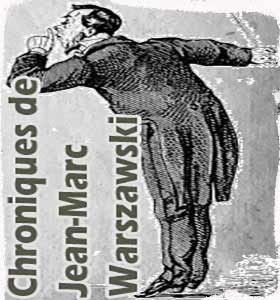
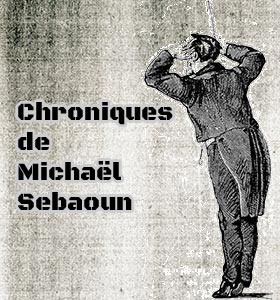
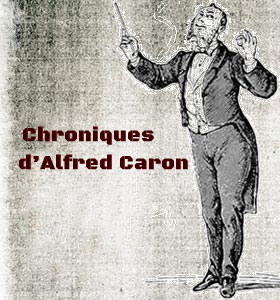
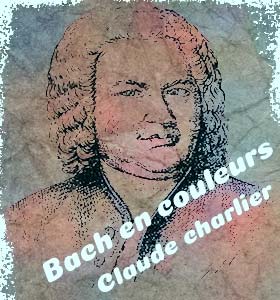
 À propos - contact |
S'abonner au bulletin
| Biographies de musiciens | Encyclopédie musicale | Articles et études | La petite bibliothèque | Analyses musicales | Nouveaux livres | Nouveaux disques | Agenda | Petites annonces | Téléchargements | Presse internationale | Colloques & conférences | Collaborations éditoriales | Soutenir musicologie.org.
À propos - contact |
S'abonner au bulletin
| Biographies de musiciens | Encyclopédie musicale | Articles et études | La petite bibliothèque | Analyses musicales | Nouveaux livres | Nouveaux disques | Agenda | Petites annonces | Téléchargements | Presse internationale | Colloques & conférences | Collaborations éditoriales | Soutenir musicologie.org.
Musicologie.org, 56 rue de la Fédération, 93100 Montreuil. ☎ 06 06 61 73 41.
ISNN 2269-9910.

Samedi 28 Décembre, 2024

